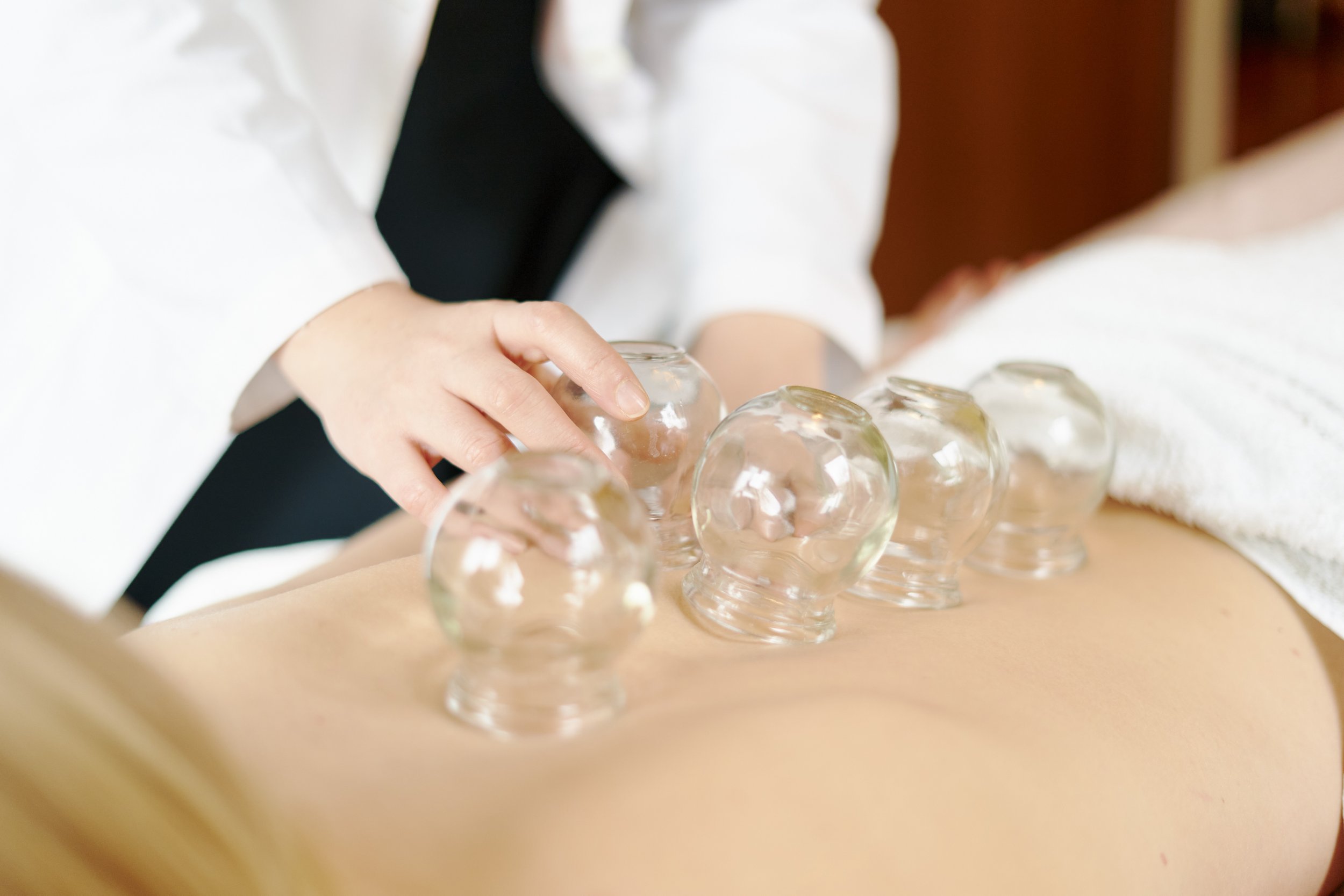
cupping
Cupping is one of the most oldest forms of medical treatment and has been part of the traditional medical system in countries such as China, Japan, Korea and Egypt. Cupping therapy, also known as myofascial decompression, involves the suction of a glass cup, performed by creating a vacuum with a flame before being placed on the body. Other types of cupping also exist which create a vacuum through a hand pump - this is a more modern form of cupping that is more commonly used.
We recommend cupping where the priority is to release tension such as in painful conditions and where muscular rigidity is involved. We also use cupping as a traditional method to boost the immune system such as for respiratory conditions and to protect from coughs and colds during the winter months.
WHAT happens during a cupping treatment?
Once the cups are placed onto the skin, you’ll feel an instant pulling sensation into the cup. This negative pressure from within the cup allows the skin's pores to open up and the warming and dispersing effects result in a number of biological and mechanical changes to the body. This negative pressure decompresses the local area by lifting the skin, local tissue as well as the fascia which in turn stretches the fascial tissue and encourages lymphatic drainage of toxins. By freeing up the fascia, the tissue becomes more fluid which softens underlying muscles, improves flexibility and reduces tissue adhesions.
Most patients describe a deep warming sensation in the area where cupping is being carried out and by the end of the session, patients describe feeling deeply relaxed and energised. It’s very common to experience a sensation of lightness and flexibility in areas which have previously felt painful, knotted, tight and tense.
What can cupping be used for?
Cupping is widely used in China for a range of problems and in our experience, it can play a particularly useful role for:
improving sports performance and recovery after strenuous exercise
pain conditions such as headache and migraine, knee pain, neck, shoulder and back pain, rheumatoid arthritis and carpal tunnel syndrome
myofascial release which can be beneficial in fibromyalgia, chronic myofascial pain syndrome and sports injury rehabilitation
respiratory conditions such as chronic bronchitis, frequent coughs, colds and asthma
chronic fatigue sydrome
insomnia anxiety, stress and tiredness
digestive disorders such as indigestion, constipation and irritable bowel syndrome

Is cupping safe?
Cupping will often leave circular bruises in areas where the fascia is especially tight and where there is a particular need for the blood and lymph circulation to be supported. These bruises are mostly painless and can often last 2-7 days.
Cupping is contraindicated directly on open wounds and fractures. We also advise against cupping if you are currently pregnant. Precautionary measures may also need to be put in place if you have sensitive skin.


